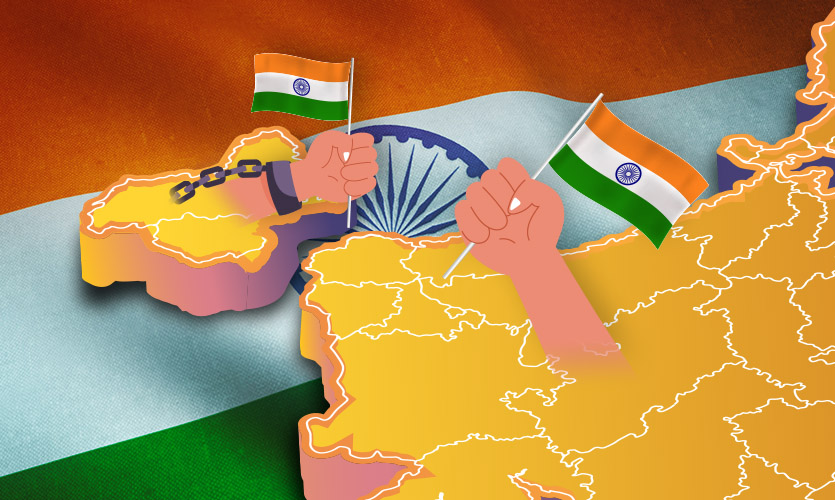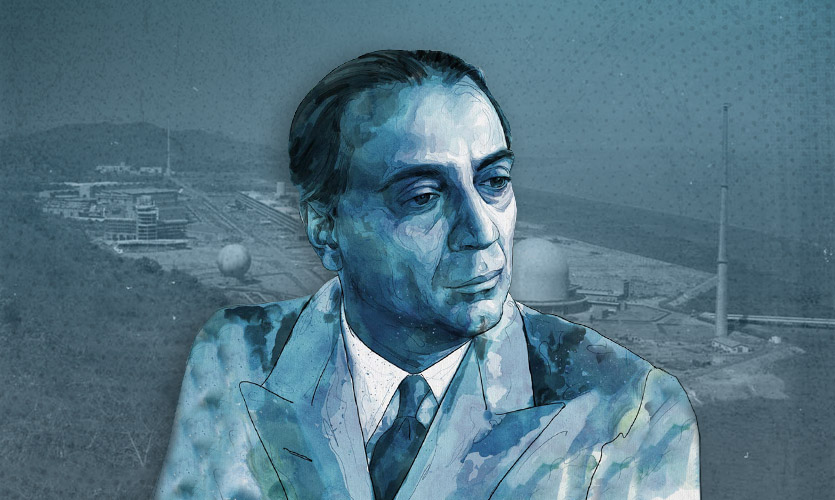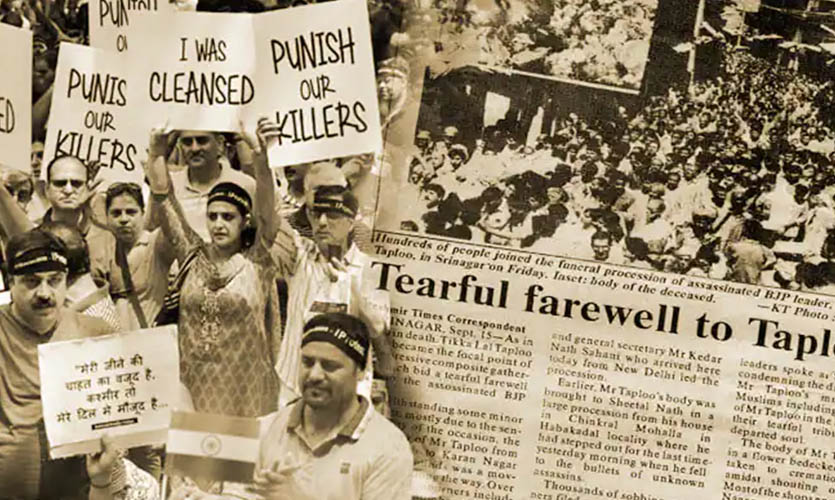This year, August 15 marks 75 years of India’s independence from the British Raj, attained after almost 100 years of struggle since the first battle for independence fought in 1857.
While most other regions in the country have managed to enjoy this freedom for the majority part of the last 75 years, is Kashmir still paying its dues?
This year, August 5 marked three years since the Indian government revoked Article 370 from the erstwhile state of Jammu & Kashmir in 2019, taking away its special status and dividing the region into the union territories of Jammu & Kashmir and Ladakh. This time the occasion was marked with only a few special columns, and didn’t make it to the primetime headlines on broadcast news television, or to top Twitter trends. While one reason for that can be the Congress’ more pressing issues vis-à-vis the National Herald debacle, another, as most columnists have supposed, seems to be that Kashmir has become less problematic.
Has it though?
Geopolitical Interference
“That Kashmir as a crisis has fallen off our minds is the first big, positive change,” writes ThePrint editor-in-chief Shekhar Gupta in his column: ‘In Kashmir 3 years on, 3 positive changes, 3 things that should’ve happened & 3 that got worse’. The larger Islamic world comprising the Gulf has been contemplating increasing investments in the region, glad with the relatively peaceful time the Valley is enjoying, with several UAE-based businesses signing multiple MoUs with Jammu & Kashmir. Statements by the Organisation of Islamic Cooperation (OIC) seem of little consequence when it refuses to acknowledge the atrocities faced by Uyghur Muslims in China. Notably, the organisation had invited Chinese foreign minister Wang Yi to attend and address the 48th session of the Council of Foreign Ministers of the OIC, as a special guest. “August 5, 2022 marks the third anniversary of the illegal and unilateral actions taken in the Indian Illegally Occupied Jammu and Kashmir, which were followed by additional unlawful measures including illegal demographic changes. Such illegal actions can neither alter the disputed status of Jammu and Kashmir nor prejudice the legitimate right to self-determination of the Kashmiri people,” said the OIC in a press release. Responding to media queries over the same, Ministry of External Affairs spokesperson Arindam Bagchi said, “The statement issued by the General Secretariat of the Organisation of Islamic Cooperation on Jammu and Kashmir today reeks of bigotry.” Reiterating that the UT “is and will remain” an integral part of India, he added, “The OIC General Secretariat, however, continues to issue statements on Jammu and Kashmir at the behest of a serial violator of human rights and notorious promoter of cross-border, regional and international terrorism. Such statements only expose the OIC as an organization devoted to a communal agenda being pursued through terrorism.”
China, on the other hand, has been at our doorsteps for two years now, after India reiterated its claim to Aksai Chin as part of Ladakh with the abrogation of Article 370. Although concerns over the threat presented by the People’s Liberation Army (PLA) at 15,000 ft are not unjustified, especially given the recent provocation by Nancy Pelosi, it may be a disservice to forget India’s resistance. India is no pushover. As noted in previous columns, the country is of immense strategic importance to the West, apparent from the lack of Western sanctions on India despite having Russian dealings during the conflict in easter Europe. Moreover, when it comes to maintaining mutual interests while forwarding a favourable diplomatic stand, India and China are on the similar page. Earlier, in June, Chinese foreign minister Yi lauded External Affairs Minister Dr S Jaishankar for calling out the West for its “meddling” in India-China relations. “The two sides (India and China) should work together to cope with various global challenges, and safeguard the common interests of China, India and the vast developing countries. Recently, External Affairs Minister Subrahmanyam Jaishankar publicly expressed his disapproval of European centralism and objections to external forces meddling in China-India relations. That reflects India’s tradition of independence,” read a statement by the Chinese foreign ministry. Reportedly, Dr Jaishankar had refuted the comparison being made between India-China relations and the situation in Ukraine, and denied the possibility of a similar conflict taking place in Asia. “The Chinese don’t need a precedent somewhere in the world on how to engage with us or not engage with us, how to be difficult with us or not be difficult with us. I just don’t see that as a very clever argument… This is the construct you are trying to impose on me and I don’t accept it,” he had said. A statement released by the Indian embassy in Beijing after Ambassador Pradeep Kumar Rawat’s subsequent meeting with Yi read, “State Councilor Wang Yi conveyed that at the highest level of leadership of the two countries, there is consensus on the importance of bilateral relations for Asia and the world.”
Pakistan becomes irrelevant in the grand scheme of things. Recently, it has called for a boycott against the 2023 G20 Summit (of which Pakistan is not a part) scheduled for later next year, in J&K. The country has called upon G20 members China, Saudi Arabia and Turkey to support its stand. The Gulf countries’ recent venture into J&K was seen as an indication to Pakistan, which has been harping on the propaganda about Kashmir still being a dispute that needs to be settled, and that Muslim countries should support its so-called claim. Their stand against India’s decision to revoke Article 370 and 35A is habitual. Regardless, despite being nuclear empowered, the country is powerless – as Shekhar Gupta puts it: “today the nation with more nukes than India is praying for an FATF reprieve in the morning and an IMF bailout at night” – and hence, it is more significant for it to be supportive of China in the matter. “Over the last decades, India has used unbridled force with complete impunity. Generations after generations, brave Kashmiris have persevered in the face of fear, intimidation, torture & worst forms of human rights violations. Indian oppression has failed to dent their resolve,” tweeted Pakistani PM Shehbaz Sharif on Friday. He added, “The Jammu & Kashmir dispute has been a battle of hope against overwhelming odds, of courage against fear & of sacrifice against tyranny. Today, we pay rich tributes to all the martyrs of IIOJK (Indian Illegally Occupied Jammu Kashmir, which is name given by Pakistan to the region of Kashmir Valley under Indian administration) for their ultimate sacrifice & to their families for their resolve & courage.” This comes after Pakistan’s Foreign Minister Bilawal Bhutto Zardari stressed that it was important to maintain relations and talk to India. He questioned, “Does it serve our interests or do we achieve our objectives, whatever they may be, be it Kashmir, be it the rising Islamophobia, be it the Hindutva supremacist nature of the new regime and government in India? Does it serve our objective that we have practically cut all engagement?” Drowning in confusion, Pakistan is also drowning in China’s debt, which is why it has long been assumed that the country is only a nominated king on the chess board, being used only for its strategically favourable geographical position.
Militancy And Kashmiri Minorities
As per Kashmir zone ADG Vijay Kumar, over 500 terrorists have been killed in J&K since 2019, out of which, more than 100 have been killed between January and June 2022. As per J&K Police, law and order related incidents in Kashmir have dropped by about 88 percent in the last three years. Data sourced by the Deccan Herald shows 3686 law and order related incidents in the three year period of 2016-2019, as compared to 438 incidents between 2018 and 2022. While 930 terror incidents have been reported during 2016-2019, prior to the abrogation of Article 370, 617 incidents have been reported during 2018-2022, supposedly leading to a drop in the security personnel deployed during the time periods, from 290 to 174.
It has been argued that the spree of targeted killings in the valley, however, seems to have dented the central government’s claims of normalcy, and given wind to the opinion that those who know about Kashmir’s history won’t read too much into the peace. Although these killings seem to be dying embers of prolonged terror that has persisted in the valley, with troublemakers running scared at the hint of development. Instances of threatening letters issued by Islamist terror groups to the minority community in the valley have also increased. “We have supporters everywhere in Kashmir even in the Police so Kafirs either accept Allah (SWT) and His Prophet (P.B.U.H.) as only Supreme Divine, or leave Kashmir else be ready to be dispatched to hell. If Muslims of Kashmir do not remain aloof from Kafirs, they will also be killed,” read a letter allegedly sent by a local militant outfit ‘Lashker-e-Islam’, to the Veervan Pandit Colony in Baramulla. This was followed by multiple letters issued by another terror organisation ‘Kashmir Freedom Fighters’, who claimed responsibility for the fatal attacks on Dogra Hindu community member Satish Kumar Singh, and Goushbugh Pattan region’s independent sarpanch Manzoor Ahmed Bangroo. They said that they had not targeted innocent people but killed “the ones who have sold the blood of our beloved martyrs for some pennies”.
Shekhar Gupta writes, “Ask any senior intelligence or Army leader in the Valley and they will admit to you how easy it’s now become for militancy to sustain itself indigenously. Lashkar-e-Taiba and Jaish-e-Mohammed franchise their terror brand, export ideology and weapons, but manpower, and ultimately the bodies, sadly, will be all Indian.” A Kashmiri Pandit community member* sheds light on the same: “A little while before migration in January 1990, I started noticing a gradual change in my friends and classmates around me. It started small. The boys started keeping longer beards and the girls who used to interact with us easily stopped associating with us and started wearing burqas. There were times when some would disappear, and people would say they’ve gone for ‘training’. They would return after some time, but I could never ask to confirm. However, I have seen the ‘jihadi’ videos on their VCRs… they used to have it on cassettes at the time… displaying how they were fighting the Russians in Afghanistan… They were my closest friends, so it seemed like a get together to watch a movie like Rambo.”
Terror organisers and financiers in and around Kashmir seem to be running scared of the developments, and the peace it would bring along, much to the satisfaction of even the Gulf. The cause of ensuring justice for Kashmir and its refugee natives has enjoyed increased solidarity from the people of India, especially after the release of The Kashmir Files. A common perception among some Kashmiri Pandits living in the valley and those who have migrated is that the selective killings have increased to impede the resettlement process. 147639 domicile certificates have been issued to Kashmiri migrants and displaced persons belonging to the erstwhile state, as of June 30, 2022, allowing Kashmiri Pandits easier access to owning land and property after the abrogation of Article 370 and 35A. While one room tenements were constructed to accommodate the refugees during 1991-92, in Muthi, Nagrota, Purkhoo, Mishriwala and Battal Balian areas of Jammu, subsequent tented accommodation was made available in these areas, along with Jhiri Camp and Brij Nagar. As per latest information received by Kashmiri Pandit migrants* settled outside of J&K, 6000 flats of two rooms each are being built to resettle the first lot of Kashmiri Pandits returning to the valley, and will be ready by December 2022. While the community has asked for increased measures of safety and security, members still in the region have formed several welfare associations, mandir committees, and so on.
Integrated Kashmir: Hope Or Dream?
For the first time post-independence, on January 26 this year, the Indian tricolour was unfurled ceremoniously in Srinagar, atop the clock tower at Lal Chowk. The Government of India was also lauded by the Jammu Kashmir Peace Forum earlier this year, for commemorating the 400th birth anniversary of the ninth Sikh Guru, Tegh Bahadur, who is revered as ‘Hind-di-Chadar’ (Shield of India), and ‘Jagat Guru’. The Guru was publicly beheaded on the orders of the Mughal emperor Aurangzeb, for refusing to convert to Islam, and resisting the forced conversions of Hindus in Jammu and Kashmir.
For the first time in the 32 years since the 1990 exodus, a separate budget has been allocated for the return and repatriation of Kashmiri migrants, apart from the existing relief provided. The budgetary allocation effective from March 2022 is Rs 825 crores, 2.5 percent of the allocated budget for the UT. The developments have provided the migrant community with the hope of being reunited with their home – an unfulfilled desire they never had the courage to voice.
While recent events seem like Kashmir is still paying its dues, the minority Kashmiri community and the current, non-violent inhabitants of Kashmir Valley appear undeterred in their hopes for a better and developed tomorrow. Although 75 years of Indian independence is the most blissful cause for celebration for the country; the recognition of Kashmir’s plight and its people’s cries to be reunited with their homeland, by the Government of India and other citizens, in this columnist’s most humble opinion, does one better, paving the way for an integrated Kashmir one day.
* Sources kept anonymous for safety reasons.
The Horus Eye is a weekly column written by Divya Bhan analysing current affairs and policies. This column does not intend or aim to promote any ideology and does not reflect the official position of The Sparrow.
Also read: Has The Prophet Row Exposed The Underlying Hypocrisy Of ‘Atmanirbhar Bharat’?
Also read: 32 Years Of Fault Lines: Time To Reopen Kashmir Files?










